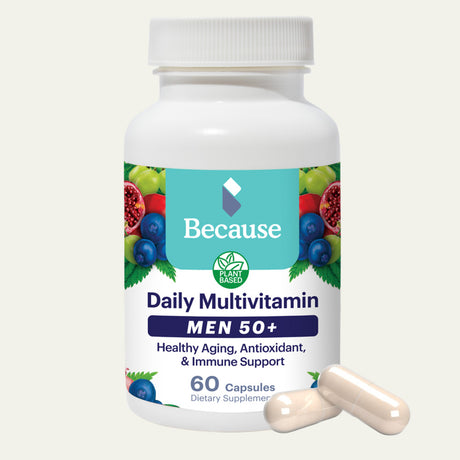Vaginal atrophy is a condition that affects many women but is often underdiagnosed and rarely talked about. Reports show that 15% of women experience vaginal atrophy before menopause and 40%-57% of postmenopausal women experience vaginal atrophy. In this article, we'll delve into the symptoms, causes, and various treatment options available to manage and alleviate the discomfort associated with vaginal atrophy. Whether you're seeking information for yourself or a loved one, empowering yourself with knowledge is the first step towards better understanding and addressing this common yet often overlooked aspect of women's health.
What is Vaginal Atrophy?
Vaginal atrophy, also known as atrophic vaginitis, is a condition characterized by thinning, drying, and inflammation of the vaginal walls due to decreased estrogen levels, often occurring during and after menopause. This can lead to symptoms such as vaginal dryness, itching, burning, and discomfort during intercourse.

Symptoms of Vaginal Atrophy
The symptoms of vaginal atrophy can vary from person to person, but you may experience:
- Vaginal dryness: Reduced lubrication in the vaginal area, leading to discomfort, itching, and irritation.
- Painful intercourse (dyspareunia): Discomfort or pain during sexual activity due to vaginal dryness and thinning of the vaginal walls.
- Vaginal burning or itching: Persistent sensations of burning or itching in the vaginal area, often accompanied by irritation.
- Urinary symptoms: Increased frequency of urinary tract infections (UTIs), urinary urgency, or urinary incontinence due to changes in the vaginal tissues and urethra.
Causes and Risk Factors
Vaginal atrophy primarily occurs due to a decline in estrogen levels, which commonly happens during menopause but can also occur during other times of hormonal fluctuations such as after childbirth or during breastfeeding. Estrogen is crucial for maintaining the thickness and elasticity of the vaginal tissues, and its decrease leads to thinning, drying, and inflammation of the vaginal walls. Other factors such as certain cancer treatments, hormonal medications, smoking, and genetics can also contribute to the development of vaginal atrophy.

Diagnosis and Assessment
Diagnosing vaginal atrophy typically involves a thorough medical history review and a physical examination by a healthcare provider. During the exam, the healthcare provider may look for signs such as vaginal dryness, thinning of vaginal tissues, and inflammation. They may also perform tests such as a pelvic exam and vaginal pH testing to assess the acidity of the vaginal environment. In some cases, additional tests like a vaginal biopsy or hormone level testing may be conducted to confirm the diagnosis or rule out other conditions.
Treatment Options for Vaginal Atrophy
Treatment options for vaginal atrophy aim to relieve symptoms and improve vaginal health. From hormone therapy to non-hormonal remedies and lifestyle adjustments, a variety of approaches exist to address this condition and enhance overall comfort and well-being.
Hormone Therapy
Hormonal therapies for vaginal atrophy involve the use of estrogen, typically administered topically in the form of vaginal creams, rings, tablets, or estrogen-containing moisturizers. These treatments aim to replenish estrogen levels in the vaginal tissues, restoring moisture, thickness, and elasticity. They can effectively alleviate symptoms such as vaginal dryness, itching, and discomfort during intercourse. Hormonal therapies are generally considered safe and effective for most women, but they may not be suitable for everyone, especially those with a history of certain cancers or other medical conditions.
Non-Hormonal Treatments
Nonhormonal therapies for vaginal atrophy offer alternatives for those who cannot or prefer not to use estrogen-based treatments. These options often include moisturizers and lubricants, which provide hydration and improve vaginal lubrication, reducing discomfort and pain during intercourse. Additionally, vaginal moisturizers applied regularly can help maintain vaginal tissue health over time.
Other nonhormonal treatments may include selective estrogen receptor modulators (SERMs) or ospemifene, which can alleviate symptoms by acting on estrogen receptors in the vaginal tissue without systemic effects. Lifestyle modifications such as dietary changes, pelvic floor exercises, and avoiding irritants like perfumed products may also contribute to symptom relief. As with any treatment, consulting with a healthcare provider is essential to determine the most suitable nonhormonal therapy based on individual needs and preferences.
Lifestyle Changes to Manage Vaginal Atrophy
Several lifestyle changes can help manage vaginal atrophy and alleviate symptoms:
- Stay hydrated: Drinking plenty of water helps maintain overall hydration, including vaginal moisture levels.
- Avoid irritants: Limiting the use of perfumed products, harsh soaps, and douches can prevent further irritation to sensitive vaginal tissues.
- Maintain a healthy diet: Consuming a balanced diet rich in fruits, vegetables, and omega-3 fatty acids supports overall vaginal health.
- Pelvic floor exercises: Regular Kegel exercises can improve pelvic muscle strength and alleviate urinary symptoms associated with vaginal atrophy.
- Sexual activity: Regular sexual activity or stimulation, including the use of lubricants, can help maintain vaginal elasticity and moisture.
- Quit smoking: Smoking can exacerbate vaginal atrophy symptoms, so quitting smoking can have a positive impact on vaginal health.
- Manage stress: Practicing stress-reduction techniques such as meditation, yoga, or deep breathing exercises can help alleviate symptoms associated with vaginal atrophy.
Preventive Measures and Self-Care Tips
Several preventive measures can help reduce the risk of developing vaginal atrophy or minimize its impact:
- Maintain hormonal balance: For women approaching menopause, hormone replacement therapy or other hormonal treatments may help maintain estrogen levels and prevent vaginal atrophy.
- Regular medical check-ups: Routine gynecological exams allow healthcare providers to monitor vaginal health and address any issues early on.
- Discuss with healthcare provider: Talk to your healthcare provider about any concerns regarding vaginal health, especially if experiencing symptoms like vaginal dryness or discomfort. They can provide guidance on preventive measures and recommend appropriate treatments if needed.
Self-care plays a crucial role in managing vaginal atrophy and promoting overall vaginal health. Here are some self-care tips:
- Use vaginal moisturizers: Regularly applying vaginal moisturizers can help maintain vaginal moisture levels and alleviate dryness.
- Use lubricants during intercourse: Using water-based lubricants can reduce friction and discomfort during sexual activity, especially if experiencing vaginal dryness.
- Wear cotton underwear: Opt for breathable cotton underwear to promote airflow and prevent irritation to the vaginal area.
- Practice good hygiene: Gently wash the genital area with mild, unscented soap and warm water, and avoid using harsh products or douching.
- Communicate with your partner: Open communication with your partner about your symptoms and needs can help ensure a comfortable and satisfying sexual experience.
- Seek support: Joining support groups or seeking guidance from healthcare providers can provide additional support and resources for managing vaginal atrophy.

Seeking Support: Talking to Your Healthcare Provider
Initiating a conversation with your healthcare provider about vaginal atrophy is an essential step towards finding effective solutions and gaining support. They can offer personalized advice, conduct thorough assessments, and recommend appropriate treatments tailored to your needs. Don't hesitate to voice your concerns or ask questions during your appointment, as addressing symptoms early can lead to better outcomes and improved quality of life.
Vaginal atrophy is a common yet often overlooked aspect of women's health, but it doesn't have to be a silent struggle. By understanding the symptoms, causes, and available treatment options, you can take proactive steps towards managing this condition and reclaiming your vaginal health. Whether it's through hormone therapy, non hormonal remedies, or lifestyle adjustments, there are various approaches to alleviate discomfort and enhance your overall well-being. Remember, you're not alone in this journey – with the support of healthcare professionals, self-care practices, and a supportive network, you can navigate through vaginal atrophy with confidence and empowerment.
Sources:
Bleibel B, Nguyen H. Vaginal Atrophy. [Updated 2023 Jul 3]. In: StatPearls [Internet]. Treasure Island (FL): StatPearls Publishing; 2024 Jan-. Available from: https://www.ncbi.nlm.nih.gov/books/NBK559297/
(2021, Sept. 17). Vaginal Atrophy. Mayo Clinic. https://www.mayoclinic.org/diseases-conditions/vaginal-atrophy/symptoms-causes/syc-20352288













